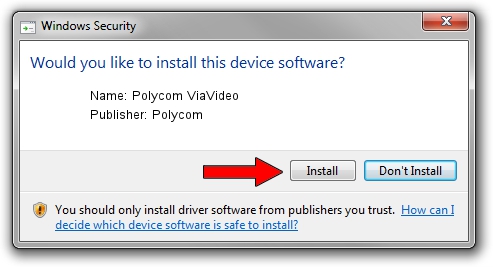The CX5100/CX5500 USB driver (published in November 2017) is not mandatory and must be used only when the USB interfaces introduced by the CX5100 or CX5500 system cannot be recognized by Windows PC. The driver installation is exactly same as the general Windows driver installation. Certified by Microsoft as a Skype Room System camera peripheral, Polycom EagleEye IV USB delivers a premium HD video experience with a pan, tilt and 12x optical zoom capability suitable for medium and large sized meeting spaces. From V1.1.1 Release, The name is changed from Polycom EE MSR camera to Polycom EE IV USB Camera.
-->The translation is provided for your convenience only. Neither Google nor Polycom shall be responsible for translated content or for the performance of the translation tool. If you require further assistance on non-translation issues, please contact Polycom support. Note: Translated documents are not available in PDF format. With the recent release of UCS 5.0 for Polycom VVX Phones automatic firmware updates are now supported directly from the Lync Device Update service. This is the same functionality which Lync Phone Edition devices have always used for firmware updates and now eliminates the need for a separate provisioning server in most Lync environments leveraging VVX Phones. The following device attributes ensure that your USB device successfully supports the procedure: Use USB 2.0 devices (some USB 3.0 devices might not work with the RealPresence Group Series systems). Format the primary partition as FAT32. Put all software update data in the root directory of the primary partition.
This article helps to fix an issue in which Windows 10 doesn't install specific drivers for USB audio devices on the first connection.
Original product version: Windows 10, version 1703
Original KB number: 4021854

Symptom

When you connect a USB audio device to a Windows 10 Version 1703-based computer the first time, the operating system detects the device but loads the standard USB audio 2.0 driver (usbaudio2.sys) instead of the specific device driver.
Cause
This issue occurs because the USB audio 2.0 driver (usbaudio2.sys) isn't classified as a generic driver in Windows 10 Version 1703. Therefore, the system assumes that a compatible, nongeneric driver is installed for the device even though the driver is generic.
This issue also causes Windows 10 Version 1703 to postpone the search for other compatible drivers through Windows Update that typically occurs immediately after you install a new device.

Resolution

To fix this issue, use one of the following methods.
Method 1
To resolve this issue, install update 4022716.
Method 2
If the device-specific driver is distributed through Windows Update, you can manually update the driver by using Device Manager. For more information about how to do this, see update drivers in Windows 10.
Polycom Usb
Method 3
If the device is not yet connected, first install the device-specific driver, such as by using the appropriate installer. After the device-specific driver is installed, Windows 10 will select that driver instead of the standard USB audio 2.0 driver when you first connect the device.
Note
See the device manufacturer's user guide for specific instructions about how to install the driver.
Polycom Driver
Method 4
If the driver isn't distributed through Windows Update, you can manually reinstall the driver. To do this, follow these steps:
Polycom Usb Devices Drivers
- Install the device-specific driver (see Method 2).
- Open Device Manager.
- Right-click (or tap and hold) the name of the device, and then select Uninstall.
- Restart the computer.
When it restarts, Windows will try to reinstall the device by using the device-specific driver.
